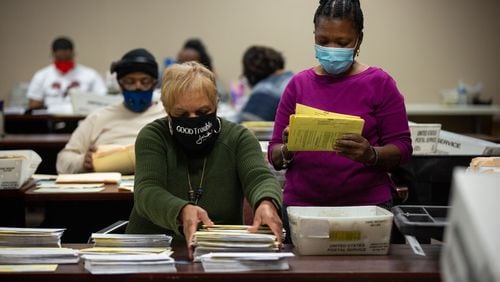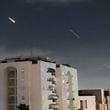ART REVIEW
“The Fallen Fawn”
Through Sept. 3. 10 a.m.-5 p.m. Tuesdays-Saturdays. Jackson Fine Art, 3115 E. Shadowlawn Ave., Atlanta. 404-233-3739, www.jacksonfineart.com.
Bottom line: Gorgeous images and a strong storyline make this among artist Holly Andres’ best works.
Two young girls find a suitcase in the woods. And like a Pandora’s box, that discovery opens up a sense of possibility, but also the potential for danger.
So goes the potent, provocative narrative contained in the photographs in Holly Andres' exhibition "The Fallen Fawn," currently on view at Jackson Fine Art. Using a color palette that suggests vintage Kodachrome, with hypersaturated, gaudy peaches and sickly seafoams, this young Portland, Ore.-based photographer has created a coming-of-age story set at midcentury that captures all the ambiguity, sense of danger, complexity, mystery, promise and fear that such an awakening can have for young girls.
This psychologically complex, gorgeously photographed drama begins with a veneer of glamour and danger in images of an unseen woman in a vintage car, her red lipstick-stained cigarette, crimson fingernails, cigarette smoke and a deer in the road. Has there been an accident, or something more sinister? A high heel floating in the water suggests personal disaster either way.
As the story proceeds in “First Blush: Elk Rock Island,” the sisters discover a treasure trove of hyper-feminine accouterments in that enigmatic suitcase: lipstick, face powder, underwear, high heels, a diary and filmy nightgowns the color of pastel buttermints. The suitcase seems to hold all of the enticing secrets of womanhood for the young girls at the center of Andres’ photographs. In dramatic, emotionally resonant terms, “The Fallen Fawn” suggests a film noir or mystery novel in which femininity is the ultimate mystery.
Told from a female point of view, through the eyes of both its young protagonists and its photographer, Andres’ series uses the vernacular of Nancy Drew and David Lynch to create a story about the loaded, fraught, bittersweet experience of passing from girl to woman.
The two girls try on the clothes, wear the lipstick and assemble themselves into a vision of womanhood in their upstairs bedroom. And then, keeping their experimentation a secret, they go down to dinner with their parents. A dinner hour of prayer and steak and potatoes may unleash a sensation familiar to young women — and men — alike, of guilt and anxiety associated with discovery.
Seated at the dinner table, midprayer in “Table Prayer: Belmont House,” their mother’s back is to us and their father’s face is cloaked in eerie shadow, abstracting his features. Through such careful use of light and vantage, Andres intensifies a feeling of unease in these images, conveying the deep sense of shame, fear and trepidation that can often accompany children’s forays outside the safe, protective confines of home. A brackish, sickly light casts an aura of anxiety on the proceedings inside the girls’ home.
In Andres’ unique approach, it feels almost like a spoiler to reveal this cautionary tale’s conclusion. Without giving away too much, “The Fallen Fawn” suggests that some mysteries, discovered too early, may be too much to bear.
Andres is a storyteller as much as a photographer, and in “The Fallen Fawn,” she shows her gifts in that regard, creating a storyline unique in its period details, but mythic in its universality.
"The Fallen Fawn" is not the first time the photographer has tackled the point of view of women and young girls. Her series "Sparrow Lane" featured similar images of female questing and danger inspired by the Nancy Drew book series, and in "The Fall of Spring Hill," fierce, protective motherhood and childhood vulnerability showed the artist's interest in creating a fully enclosed and resolved narrative arc in her distinctly cinematic images.
But “The Fallen Fawn” is unique: an instance of a tightly edited narrative revealing deeper, allegorical ripples beneath the surface, as Andres examines huge issues of femininity, sexual awakening and a backbeat of threat and fear in girls’ and women’s lives.





